#green cutworm moth
Text
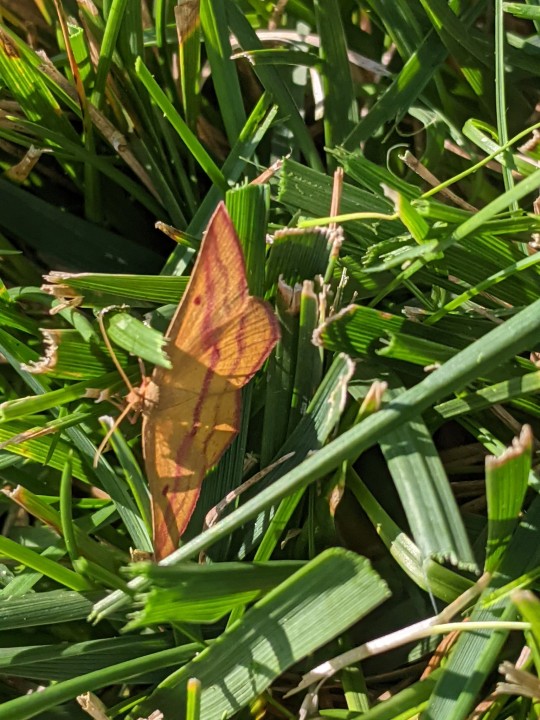
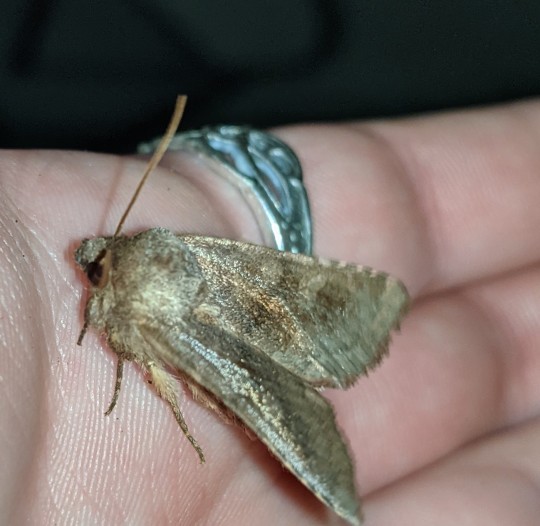

@candycl0wn submitted: moth compilation
chickpea geometer
bronzed cutworm
green cloverworm
It's actually a chickweed geometer, but I assume that was just a typo on your part. But I love them all and they are very beautiful :)
#animals#insects#bugs#submission#moth#chickweed geometer#bronzed cutworm#noctuidae#green cloverworm#erebidae
119 notes
·
View notes
Text


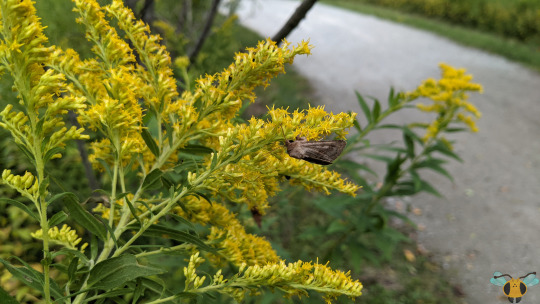
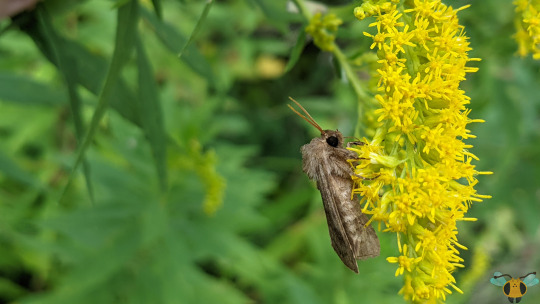



Bronzed Cutworm Moth - Nephelodes minians
I may be completely off base here given the sheer breadth and the number of species within the family Noctuidae (Owlet Moths), but from the images I've examined, this insect is the best match. If anyone has a suggestion for what else this Moth could be, I'll gladly consider them and will investigate (keep the range in mind for this individual which was found in Kleinburg, Ontario). In any case, Cutworms in Caterpillar form have earned a notorious reputation for their feeding which has reinforced their name. They tend to come out at night in search of plant-based food, and most notorious of them chew through plants at the lower stem, cutting them down (hence "Cutworm") to eat the leaves. Feeding behavior like this also subsequently destroys the plant, leaving the roots to pick up the pieces. Aside from toppling plants, other evidence may be left behind from Cutworm efforts including circular-shaped damage and frass. These cuttings can be very intense if multiple Caterpillars occupy the same area (which has also given them the name "armyworm") which can be particularly brutal if swarms find their way into crop production. For this specie, the Bronzed Cutworm can have a potential impact on crops as it has been reported to enjoy corn and cereals, but it seems to be handled through careful monitoring.
The Bronzed Cutworm more frequently seems to be associated with the consumption of grasses. As mentioned above, it will eat the blade from the bottom and slowly spread out until the grass in reach has been clipped. For nighttime detections, be wary for a large Caterpillar that appears as either mottled green or dark brown, with stripes parallel to the "spine" running along the body. It has an orange face with a black covering right behind the head. When threatened, it will likely ball up and shield its head, a key behavior in Cutworms. After having its fill, the adult will eventually emerge from a cocoon and resemble the individual seen in these pictures. That being said, this specie's wings have an incredibly variable appearance with several darker patterns displayed. Some many appear more mottled, some yellow, some pink, and others with a bronze sheen to their wings (but not iridescent). This individual's wings are more lighter/sandier by comparison. When examining the wings, look for a darkened "U-shape" section around a wing-spot. Flower nectar will become its preferred source of food now that mandibles have been swapped for a proboscis. While future damage may be a concern, the wilds here have plenty of grass for all (including very hungry Grasshoppers); the Caterpillars can eat their fill, but must be wary of the hunters that lurk in the grass (see this post for more info).
Pictures were taken on September 11, 2021 in Kleinburg with a Google Pixel 4.
#jonny’s insect catalogue#ontario insect#moth#bronzed cutworm#bronzed cutworm moth#owlet moth#lepidoptera#insect#kleinburg#2021#september2021#nature#entomology#invertebrates
6 notes
·
View notes
Text
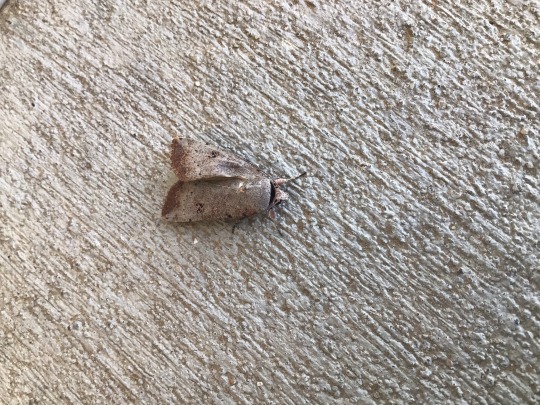
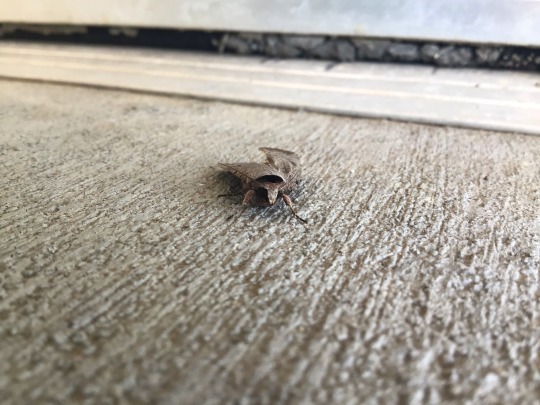
Couldn’t get many particularly flattering photos of this guy, but on he goes! This little man is the anicla infecta, or the Green Cutworm Moth. As you can see, this one is not green! Some are a very faded green, though. They are great at hiding among the lichen on trees.
2 notes
·
View notes
Text
i saw so many good little guys today!!
bugs: green tiger beetle, butterflies (painted ladies, fritillary, swallowtail!!), lots of grasshoppers, cucumber beetle, bees/wasps, dragonflies and damselflies, caterpillar of indeterminate species (yellow striped cutworm maybe? or a striped garden caterpillar), GOOD inchworm or winter moth cat (did not check, probably inchworm)
BIRDS: so many birds, great blue heron, egrets, SWANS (with babies), geese (WITH BABIES), black crowned night heron, cormorants, green herons?? soo many cardinals and woodpeckers and songbirds
herps: 2 snakes (northern watersnakes, probably), 1 turtle
1 chipmunk, thousands and thousands of frog eggs, and some floppy fishes jumping out of the water
there was an entire field of milkweed but it's too early for monarchs til they flower :(
#it's been so long since i went to a nature preserve#very productive observatiosn#*observations#many cute friends
6 notes
·
View notes
Text
those flipping flea beetles and my eggplants. 😭
i swear, if it's not one thing, it's another. they're so stunted and I have a feeling the smaller ones are gonna die. they look so bad.

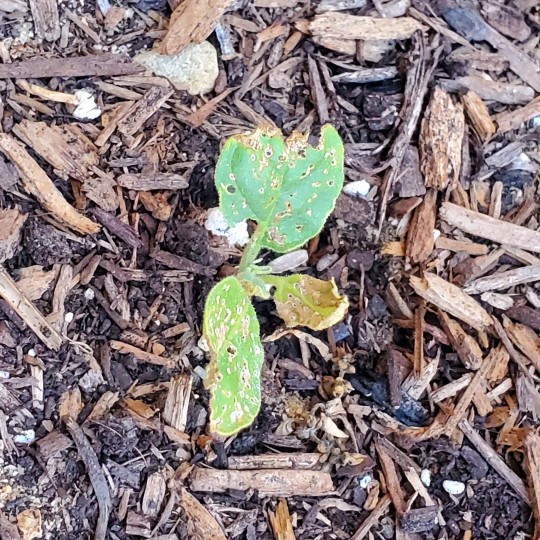

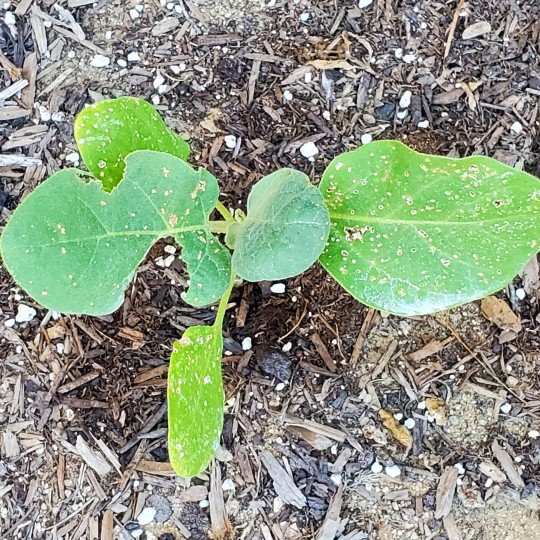
and the culprit:
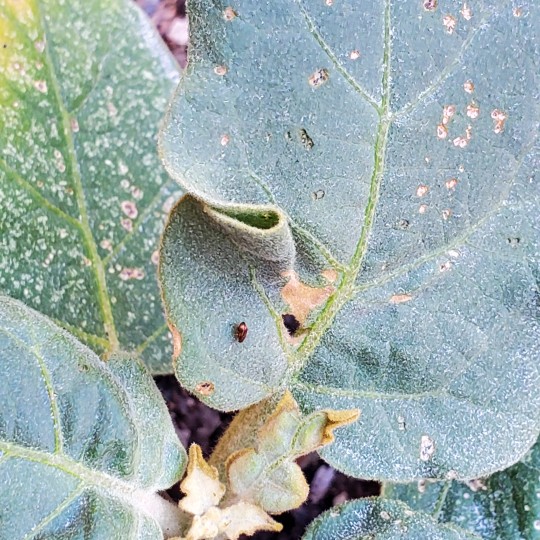
i literally JUST sprayed the plant down with a mix of water, DE, Neem oil, and soap... so WTF?
I heard coffee grounds repel them, so I'm off to get some to sprinkle around it.
next project was the peppers, which I moved over. the cherry peppers have a lot more room, and the 2 serrano are in it's place.
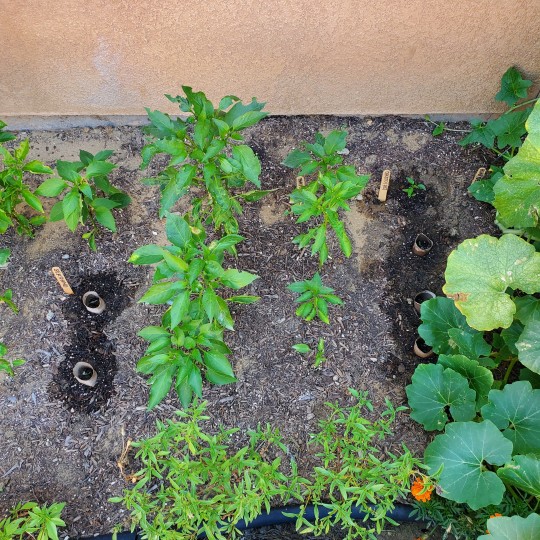
i hope I didn't shock them too much. i started to figure it was maybe better to do it when they had simple roots instead of when they're older with more complicated roots. Having the soil plug attached helps.
*we shall see*
trellised the cucumbers.

i believe I have 4 plants now. so 2 are a trailing situation in the back and the other 2 are going up on opposing sides of the trellis. i like how this gives me more access to roots.
while moving over the dill, I caught 2 green worms, probably munching on the radish leaves. 🐛
*smoosh*
and... my strawberry leaves are browning.
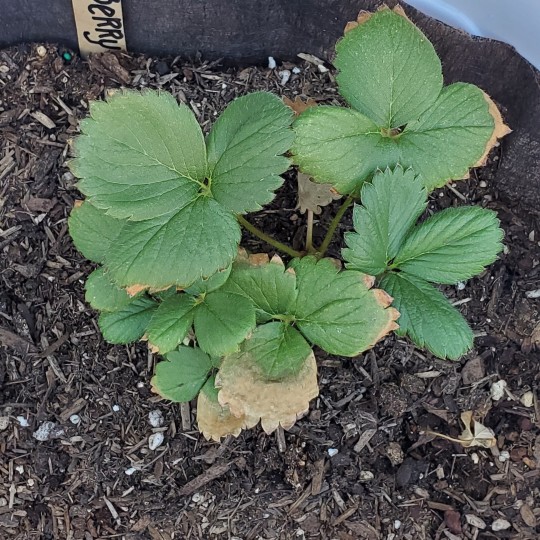
i may be watering it too much? they have new leaves coming through, so I might just lay off watering them at all and let them dry out a bit.
i think I have an issue with over watering my plants, tbh. need to cut that shit out.
condensed my soil for my more mature plants and readied a few pots with soil for the nursery plants. I'm excited and hopeful for the pineapple sage because I don't think what I have is coming back. i mean, I can keep trying, but I think it's toast.
something nibbled my cilantro. definitely a 🐛 but I didn't see anything in the pot. cucamelons are growing tiny secondary leaves. I want to make sure they're good and mature because the area has 🐛 and the cutworm moths that like to hang out in that area. the seeds... i think instead of putting them in a separate pot, I'll just wrap it in seedling starter soil and add it into the same pot.
dill is sprouting well. Korean mint is doing good, and so far, so is the rosemary, both in the pot and in water... though I don't know if I want to keep the old roots in water, or clip it all off and try to grow fresh roots from the stem.
0 notes
Text
Cutworm babies up close!
13 notes
·
View notes
Photo
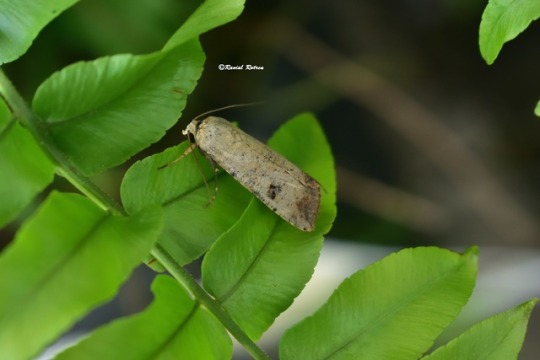
So many moths out. They’re better photography subjects than butterflies.
#green cutworm moth#Animalia#Insecta#Lepidoptera#Noctuidae#Noctuinae#Anicla#Anicla infecta#moths#owlet moths#Nikon D3400#nikonphotography#my insects#my moths#nature photography#photographers on tumblr#Agrotis infecta#Agrotis incivis#moths of North America#moths of South America#wildlife
3 notes
·
View notes
Text
The moth of the day is this guy who I can't identify
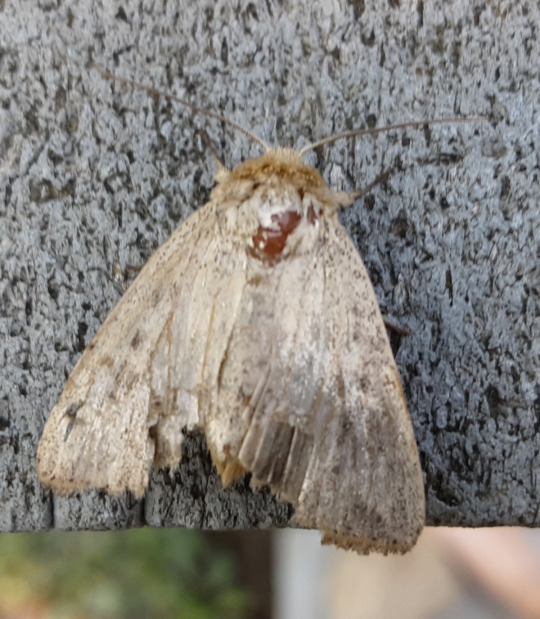

His name is Monty
#the app keeps calling him either a#green cutworm#or a#Ursula wainscot#but idk what he is#tw insects#moth#moths daily#moths#tw moths#tw moth#insects#bugs#tw bugs#bug#insect#bugs tw#lepidopterans#lepidopterology
159 notes
·
View notes
Text

11/6/20
5 notes
·
View notes
Text
Oooooohhh

Olive green cutworm moth I didn't know you existed until yesterday but what a beauty! Just look at that pattern!
#What a cute friend!#Its rare I see a moth like this but sometimes I see T-Bone moths which are kinda cool too#moths#moth
2 notes
·
View notes
Text
Lacking the dangerous charisma of other Aussie undesirables, such as red-back spiders, funnel-webs or tiger snakes, these largish, muddy-brown insects were the embodiment of abject otherness, their persistent knocking against uncurtained windows and sneaky incursions into closely guarded domestic interiors summoning inchoate fears and feelings of revulsion. [...] [T]he Great Invasion of 1969, when [...] the nation’s capital fell prey to such a large bogong infestation that the automatic lifts and air-conditioning shafts of some high-rise office buildings were blocked by resting moths, while parts of the city even suffered power failures [...].
Within the public space of the federal capital, the world of the Kamberri is recalled in the guise of sundry bogong sculptures, such as those that grace the grounds of the Australian Institute of Aboriginal and Torres Strait Islander Studies on the Acton Peninsula, once a major corroboree site.


In Australia, Agrotis infusa, as it is known to Western science, typically begins and ends its life-cycle on the slopes and plains west of the Great Dividing Range in northern New South Wales and southern Queensland. Each spring, swarms of adult moths fly south into the Snowy Mountains of southern New South Wales and northern Victoria in search of the cool dark crevices in alpine blockstreams, cavernous piles of granite boulders, where they while away the hot summer months in a process known as ‘aestivation’. There they make themselves collectively cosy during the day by tucking their heads under one another’s wings, covering the rock walls like scales or roof tiles. [...]
The urge to set off on this annual migration appears to be triggered by the drop in barometric pressure that accompanies the formation of summer storms. The moths travel by night, upwards of 1,000 kilometres in some cases, feeding on nectar along the way, and dropping down to ground to shelter during the day. This was always a potentially perilous journey, but it became a whole lot more so during the twentieth century. In addition to the perennial risk of being blown off course and towards the eastern seaboard by westerly storm winds, the growth of towns illuminated ever more brightly by electric lights has proven a not infrequently fatal attraction for migrating moths. It is thought that the lights ‘fool the moths into behaving as if the sun was coming up. Their natural response is to dive down to the ground to find a dark place before the heat of the day sets in. … Buildings can become covered with a thick coating of moths, desperately seeking dark cracks and crevasses to hide from the sun’ (‘Bogong Moths Migrating South’). Those that end up in Sydney, not to mention Melbourne, have gone seriously astray, probably as a result of stormy weather; but Canberra is right in their flight path, and, in addition to the domestic illumination of its sprawling suburbs, the 40,000 lights of the New Parliament House, with its elevated floodlit flagpole beckoning from afar, burn long and strong.


Bogongs that manage to survive the risks posed by storms, predators, poisons and the odd book-wielding student during their southern sojourn, return north to their breeding grounds in the relative cool of the autumn. Now that they are all grown up, they duly mate, whereupon the pregnant females cleverly lay their eggs on the stems of a variety of food plants. Previously native species, these are now all too often agricultural crops, such as cauliflower, silverbeet, lucerne, flax and sundry cereals. Needless to say, this practice has ensured that bogongs are if anything even more hated by farmers than by city slickers such as myself. When the larvae emerge in the guise of hungry caterpillars, creamy-coloured to begin with, then green, and finally grey, black or orange-brown in hue, they each make themselves a snug burrow in the soil at the base of their host plant. There they hide by day, craftily emerging under the cover of darkness to feed. This nightly feasting is bad news for seedlings, the stems of which are often gnawed right through, leading bogongs to be classed as a pestiferous ‘cutworm’ and, for the past fifty to one hundred years, regularly doused in an array of biocidal chemicals.
While the causes of this [bugong moth population] decline remain uncertain, the clear-felling of native vegetation in their breeding grounds and liberal use of biocides on the cropland that has replaced it are likely to be factors (Keaney). The industrial production of preferred settler Australian foodstuffs, and possibly other lucrative plants, in the bogong breeding grounds also appears to be threatening more than the moths themselves.
A paper published in 2001 (Green et al.) found that the raised levels of arsenic found in the outwash areas of those caves where bogongs had been aestivating over summer indicated that the moths were importing poison into the alps. Moreover, arsenic was also found in the faeces of mammals that prey on them, including bats and mountain pygmy possums, an already endangered species. The source of this arsenic could well be from accumulations in the soil, a legacy of its former use in pesticides, as well as in cattle and sheep dips, in lowland agriculture: the story of the bogong discloses connections across time as well as space.
---
Photos, captions, text from: Kate Rigby. “Getting a Taste for the Bugong Moth.” Australian Humanities Review. May 2011.
26 notes
·
View notes
Text



@sweetcreatortimetravel submitted: Hi I found these two bugs and I'd like to know what they are?
one was hanging out on a building. It looks like some kind of moth with a pretty pattern.
the other one was this caterpillar in my plant pot, I only saw it at night (that's why the photos are slightly blurry, sorry). The next day it was gone, I assume it is somewhere im the soil for the winter. Looks like it ate most of my purslane.
both in [removed] (please redact) and found back in october.
Hello :) The first fellow is a carpet moth, which is a type of geometer moth. There are a LOT of species that look very similar, but it looks to me most like a red-green carpet, Chloroclysta siterata. The caterpillar is a noctuid cutworm, so it makes sense you saw them at night! They bury themselves in the soil during the day. That one specifically looks like a large yellow underwing.
#animals#insects#bugs#submission#moth#geometer moth#carpet moth#red green carpet#caterpillar#larva#noctuidae#cutworm#large yellow underwing
45 notes
·
View notes
Text

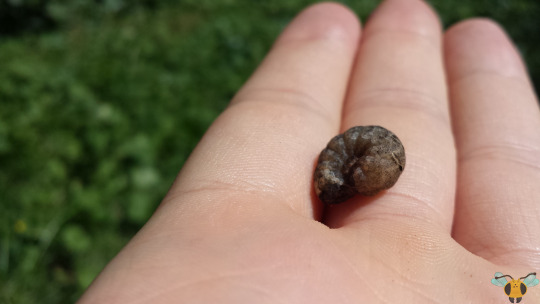





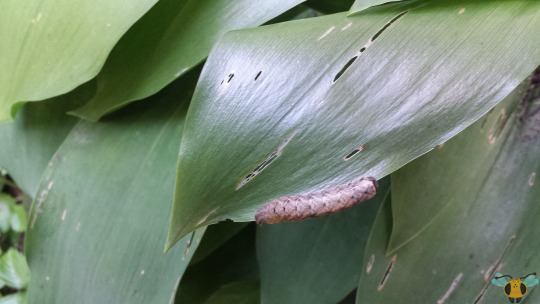
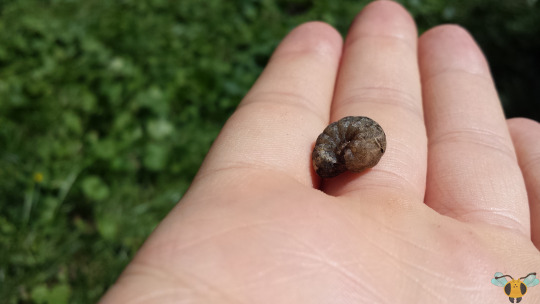
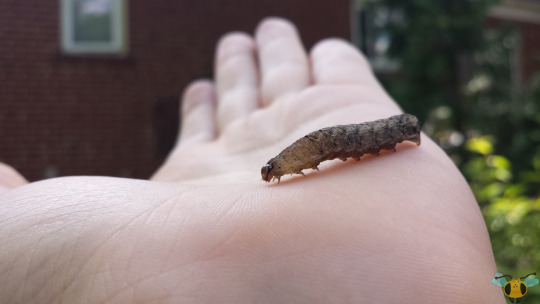
Rustic Quaker Moth Caterpillar - Orthodes majuscula
Attempting to deduce the identity of this insect has been challenging, and it's a challenge that's between going on since the pictures were taken over 4 years ago! Initially I thought it might be a one of the many Moths closely related to the Variegated Cutworm (Peridroma saucia). Though this was the right track, I wasn't even close. There are species beyond count in the Owlet Moth family (Noctuidae) and many of them have a similar appearance to this Caterpillar: long-bodied, mottled in color, heavy with stored nutrients, spots on the dorsal side (with line patterns along the body - faded in this individual), and an orange face streaked with black stripes. Though a lot to choose form, this is a good description to keep in mind should you find these insects on or near your garden's plants. They aren't called "cutworms" for no reason! Many species will feed on alive, green vegetation by climbing up mature plants and cutting holes into leaves to have their fill! They'll attach onto a plant using their rear prolegs and weave around to orient on the best leaves. More worrisome is their tendency to feed on young plants by cutting them from just above where they emerged from the soil! Hungry Caterpillars need to eat, but eating plants before they're even fully grown is a bit too eager for me!
They can be nighttime feeders as well, meaning that their defoliation damage may escalate rapidly before they are discovered (assuming multiple wrigglers)! With regards to this specie specifically, it seems the Rustic Quaker prefers a diet focused on grasses, dandelions and plantains, two of which at least are of some important to crop production or garden development. After learning the identity of this Caterpillar, I'll be keep a closer watch on the zebra grass around the yard, but if it wants to eat any dandelions, it can gladly do so. As for how the identification came to fruition, I noticed some ridging along the back of the Caterpillar between segments (look where the body's lines travel for the ridging). Combine that with the arrangement of dark spots along the dorsal side (2 prominent towards the front, faded until the final spot at the abdomen's rear), the Rustic Quaker was the best fit. It is still possible to be incorrect given the size of Noctuidae, but compared to instars of similar size, I'd say the match is possible and well within habitat range. Finding a Moth of this specie would be a great help to confirm, but hopefully it's not another 4 year wait to accomplish that.
Pictures were taken on August 11, 2019 with a Samsung Galaxy S4.
#jonny's insect catalogue#ontario insect#caterpillar#rustic quaker moth#rustic quaker caterpillar#moth#owlet moth#lepidoptera#insect#august2019#2019#toronto#nature#entomology#invertebrates
0 notes
Photo


𝑼𝒏𝒅𝒆𝒕𝒆𝒓𝒎𝒊𝒏𝒆𝒅
I do have two possible species though, I might as well take up two index entries.
Both species are from the Spodoptera genus
𝑺𝒑𝒐𝒅𝒐𝒑𝒕𝒆𝒓𝒂 𝒆𝒙𝒆𝒎𝒑𝒕𝒂
“African Armyworm”
Order Lepidoptera
Superfamily Noctuoidea
Family Noctuidae “Cutworms, Armyworms, Whistling Moths, Underwings”
Subfamily Acronictinae
The Adult moth has a complex array of brown patterning, mimicking wheat/grass seeds (As you can see above) The wingspan is about 3CM.
The Larval stage (has yet to be photographed) is a pale green, with two striped patterns vertical striped patterns in a darker shade of green, and a black head. The later instars become brown.
The Larvae feeds on:
Brachiaria mutica “Para Grass”
Oryza sativa “Rice”
Paspalum dilatatum “Dallisgrass”
Pennisetum clandestinum “Kikuyu”
Saccharum officinarum “Sugar Cane”
Sorghum bicolor “Sorghum”
This species is found in these Australian states:
Q.L.D
W.A
N.T
N.S.W
Along with these Countries:
Africa (Presumably across the whole continent)
Hawaii
Japan
New Zealand
U.S.A
𝑺𝒑𝒐𝒅𝒐𝒑𝒕𝒆𝒓𝒂 𝒎𝒂𝒖𝒓𝒊𝒕𝒊𝒂
“Lawn Armyworm”
Order Lepidoptera
Superfamily Noctuoidea
Family Noctuidae “Cutworms, Armyworms, Whistling Moths, Underwings”
Subfamily Acronictinae
The Adult moth Has practically the same patterns as the species listed above, however images I find show a subtle navy-blue tint.
The Larval stage (has yet to be photographed) Start off with smooth-skin and green longitudinal lines. The later instars become brown with two rows of black triangles along the back.
Like other Spodoptera caterpillars, when disturbed they drop, curl into a ball, and stay still.
The Larvae feeds on:
Cynodon species “Bermuda Grass”
Pennisetum clandestinum “Kikuyu”
Sorghum bicolor “Sorghum”
Oryza sativa “Rice”
This species is found in many Australian states/islands:
Q.L.D
N.S.W
N.T
W.A
Norfolk Island
Lord Howe Island
Along with these Countries:
Borneo
Hawaii
India
U.A.E, “United Arab Emirates”
17/12/20, source
- RatteJak
#spodoptera genus#Spodoptera exempta#undetermined species#index#spodoptera mauritia#rice#grass#african armyworm#lawn armyworm#armyworms#cutworms#lepidoptera#lepidopterophobia#Noctuidae#noctuoidea#Acronictinae#adult form#moth#moths#mothblr#moths tw#bug#bugs#bugblr#bugs tw#insect#insects#insecta#insects tw#insectblr
2 notes
·
View notes
Text
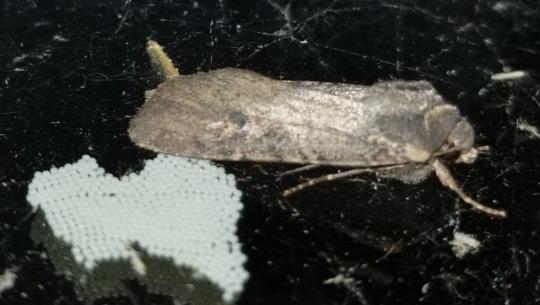
Green cutworm friend and eggs!
8 notes
·
View notes
Photo

Cutworms Cutworms are destructive pests that damage many different types of plants. The larval forms of several species of moths, cutworms plague lawns and gardens from early spring through fall. Some cutworm species prefer vegetables, including cabbage, lettuces, peppers and carrots. Others go after lawn grasses first. In warm climates, several generations of cutworms are born each season. Their damage builds by fall.
Identification of Cutworms:
Depending on the species, cutworms vary in colour from pink, green or brown to black, usually with muted stripes running lengthwise along with their bodies. When disturbed, they curl up into a "C." One of the most common types is the black cutworm, which affects lawns and vegetable gardens. The plump, greyish brown, greasy-looking larvae grow up to two inches in length.
Signs/Damage:
Cutworms spend their days in soil, coming out to feed at night. You may notice plants wilt under the sun's heat. Closer inspection reveals stems damaged or cut in two, as the name implies. Seedlings and young transplants are the hardest hit. In lawns, cutworms feed at the grass base, cutting off the blade and dragging it back to nearby caves. Check lawn thatch for small tunnelling holes lined with green excrement—lawn damage peaks during hot summer months.
Control:
Unless days are cloudy, cutworm damage happens at night. To maximize your impact, apply cutworm treatments in the evening hours. We offer several highly effective products that kill cutworms by contact and keep protecting for up to three months*.
Sevin® Insect Killer Granules reach cutworms above and below the soil line. Apply the ready-to-use granules with a regular lawn spreader. Then water the treated area to release the active ingredients and reach cutworms where they hide. In garden areas with known cutworm problems, be proactive. Work the granules into the top 4 to 6 inches of soil before planting or as soon as plants emerge.
Sevin® Insect Killer Ready to Use is ideal for treating targeted plants or smaller garden areas. Just shake the bottle, adjust the nozzle to spray narrow or wide, and you're ready to treat and protect.
Sevin® Insect Killer Concentrate, used with a pump-style sprayer, or Sevin® Insect Killer Ready to Spray, used with a regular garden hose, simplify treating larger areas where you see or expect cutworm damage. Spray to cover all plant surfaces thoroughly, including stems and undersides of leaves.
Tip: Cutworms overwinter in the larval stage in soil. Till your garden in fall and spring to expose and kill overwintering larvae. Read More: https://thesafepesticide.com/cutworms/?feed_id=245&_unique_id=6112531438821
0 notes